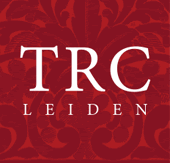Kuba or Kasai ‘velvet’ is a form of textile that is produced in Congo. Although the textiles are often referred to as velvets or pile weaves, they are in fact a form of embroidery on a finished piece of raffia cloth.
According to Kuba legends, their 17th century ruler, Shyaam a-Mbul a-Ngoong, learnt the arts of weaving and embroidery from people living in the west and he introduced these techniques to his own people. What is clear is that this form of cloth has been produced in the region for at least 250 years, as there are two mid-18th century examples from the Zaire River region in the British Museum, London. By the 19th century, this type of cloth was being produced by Kuba and neighbouring peoples in the nearby Kasai River region.

Basically, the ground cloth of a Kuba ‘velvet’ is made of raffia and is woven in a tabby weave. The thread that is used for the embroidery is a very fine, and has been rubbed until it is soft. The embroidery threads are often dyed in a range of colours, including brown, black, orange, purple, red and yellow. The embroidery is a form of counted thread work, whereby the thread is worked in lines (following the weft), which are creating blocks of colour. An iron needle with a large eye is used for the work. The needle carries the thread to the back of the cloth where it goes behind two or more warp threads before returning to the surface of the cloth. When a row is completed, the embroidery thread is cut with a small knife, thereby creating a pile, and the process is repeated. The pile created in this manner is only a few millimetres in height. The cloth is used for clothing as well as gifts and as a form of currency.

